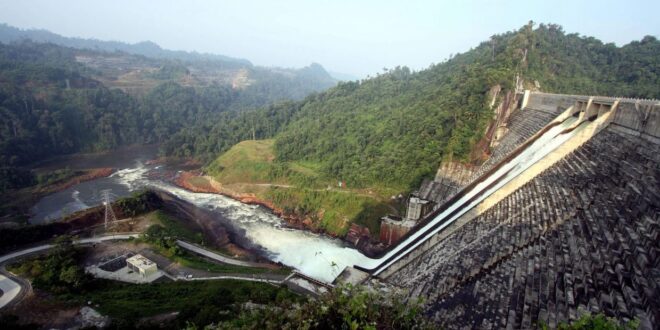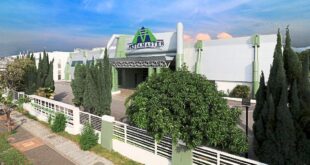SARAWAK is an economic powerhouse in the making. That is a given.
The question is what are the opportunities and how do peninsula-based companies take advantage of them?
It’s not easy at all. It can even be compared to trying to break into a new country, such as Indonesia.
Take the red-hot energy sector. Sarawak is poised to become Asia’s renewable-energy (RE) rock star.
However, the state has its own regulator and is not under the Energy Commission (EC) but instead under the state’s Ministry of Utility and Telecommunications (MUT). Sarawak has its own new energy economic roadmap.
If you are used to bidding for EC-driven projects such as large-scale solar and the Corporate Green Power Programme, you have to now get used to MUT’s programmes.
They are closely aligned with Sarawak Energy Bhd (SEB), the state-owned energy utility, which runs three hydroelectric plants (HEPs) and generates 3,452MW of green power.
Sarawak can produce 20,000MW of hydropower from 52 sites. Cascaded elements are also being implemented in their HEPs, which increase electricity production.
MUT and SEB plans allow private players in floating solar projects or facilitating their net energy metering projects.
Hydrogen is also a big play, with global players already involved. Traditional oil and gas (O&G) and petrochemicals are also in play, despite a gradual move towards renewables.
Getting into any of these businesses, however, requires a good local partner. Those are scarce. No wonder players from the peninsula who have made inroads are tight-lipped about their efforts.
Sarawak is also planning to sell green energy to Singapore in a direct deal with parties there. Discussions are ongoing over who will fund the construction of the undersea electric cable.
Indications are that Singapore corporations will fund most of it, and there is also a possibility that the Malaysian government may become an equity partner in the project, alongside Sarawak, but in smaller amounts due to the huge capital investment required.
Indonesia’s Nusantara plans are also nicely playing out for Sarawak.
Investment banks have been getting into the game, lining up visits for their clients to all the top companies operating in Sarawak, including state entities in charge of investing and regulating business.
One peninsula-based company, Solarvest Holdings Bhd, has built a green lab in Kuching in partnership with the Centre for Technology Excellence Sarawak (Centexs) and Huawei Technologies (Malaysia) Sdn Bhd. Solarvest’s chief strategy officer is Sarawakian and was formerly with SEB, naturally giving the energy firm strong inroads.
Private-equity professional Mohamad Zam Zalman Tik has been involved in businesses in Sarawak for the last 15 years, which has given him strong linkages there. His bullishness on the state is leading him to set up an infrastructure-focused fund to make investments in Sarawak.
“Sarawak is determined to elevate its infrastructure and is looking at new technologies. Another area is energy transition, such as the decommissioning of coal-fired power plants into combined cycle gas turbine powered ones,” Mohamad Zam says.
Mohamad Zam, who is also involved in an engineering company doing projects in the power and O&G sectors there, notes that the clear policies and business-friendly discussions made it easy for his firm to decide to set up a full office in Sarawak.
Many Sarawakians are also returning to the state, from food and beverage operators to top-level corporate executives.
Sarawak is setting aside some RM8bil to start a sovereign wealth fund modelled after rich countries like Norway, with a focus on capital preservation. Sources say it will be headed by Sarawakian Abang Rahmat Yusuf, CLSA Securities Malaysia head of investment banking.
Meanwhile, Peninsular Malaysia companies will need local partners and, in many industries, will need to be certified by the state regulator.
While Sarawak welcomes companies from Peninsular Malaysia, it also welcomes foreign multinational companies. This means that Sarawak is interested in securing what is best for it. This also means that when you are bidding for a job, expect to go against global big names.
Sarawak’s vast amount of green energy is attracting companies wanting to build data centres there. A local investment banker says he is helping bring RE players, construction firms, O&G and heavy industry players into Sarawak.
“There is clearly a very strong Sarawak vibe today being discussed in the offices of many large Malaysian companies. But getting to market in Sarawak has its challenges,” he says.
There are, however, some concerns. What is the state’s plan for monetising the hydrogen economy, for example?
As for their sovereign wealth fund, will it be allowed to invest abroad in order to hedge against ringgit-denominated assets? Bank Negara Malaysia and the Ministry of Finance must approve such a move.
Many Sarawakians working in the peninsula are still unsure that their state has taken off on a new trajectory.
“It would be great when that happens, but for now, job opportunities remain in the Klang Valley,” says a 30-year-old Sarawakian stockkeeper at a pharmaceutical firm in Kota Damansara, Selangor.
 BeritaKini.biz Berita Viral Terkini di Malaysia
BeritaKini.biz Berita Viral Terkini di Malaysia





